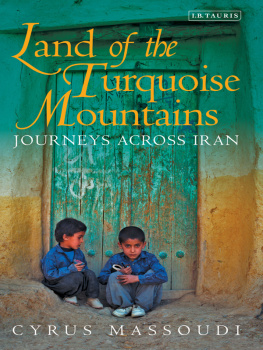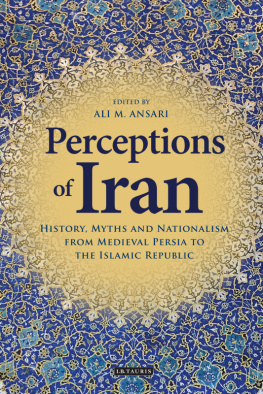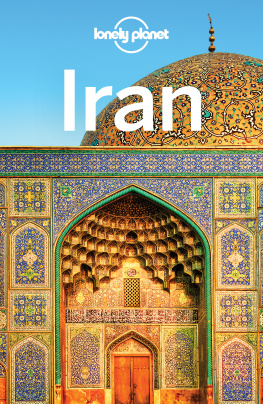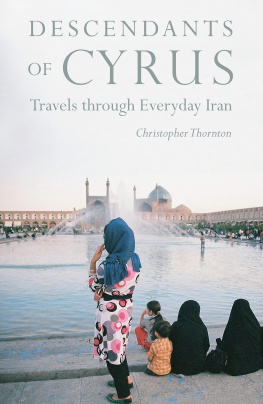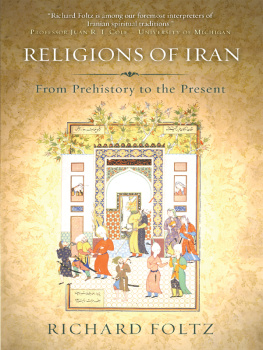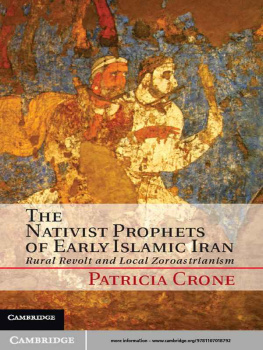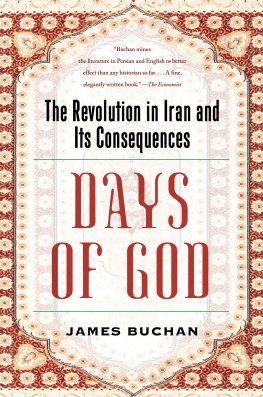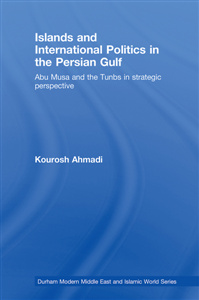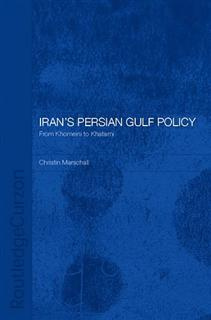Cyrus Massoudi was born in London. After completing his studies at Edinburgh University, he moved to Iran where he spent three years on a journey of self-discovery, travelling and researching this book. He now lives in London with his wife and daughter, working as a writer, screenwriter and translator. Land of the Turquoise Mountains is his first book
A fascinating insideroutsider view of a complex country we badly need to know more about. Writers like Cyrus Massoudi who illuminate our ignorance are vitally important.
William Dalrymple
Land of the Turquoise Mountains
Journeys across Iran
Cyrus Massoudi

First published in 2014 by I.B.Tauris & Co Ltd
6 Salem Road, London W2 4BU
175 Fifth Avenue, New York NY 10010
www.ibtauris.com
Distributed in the United States and Canada
Exclusively by Palgrave Macmillan
175 Fifth Avenue, New York NY 10010
Copyright 2014 Cyrus Massoudi
The right of Cyrus Massoudi to be identified as the author of this work has been asserted by him in accordance with the Copyright, Designs and Patents Act 1988.
All rights reserved. Except for brief quotations in a review, this book, or any part thereof, may not be reproduced, stored in or introduced into a retrieval system, or transmitted, in any form or by any means, electronic, mechanical, photocopying, recording or otherwise, without the prior written permission of the publisher.
ISBN: 978 1 84885 637 0
eISBN: 978 0 85773 604 8
A full CIP record for this book is available from the British Library
A full CIP record is available from the Library of Congress
Library of Congress Catalog Card Number: available
For Edie Aryana
Preface

So turns the world: her favours are soon passed,
All whom she nourishes must die at last.
One she will raise from earth to heights unknown,
One she will cast down from a royal throne;
But theres no cause to triumph or complain,
Such is the way she turns, and turns again:
Where are those heroes now, those champions, where?
Drive out such mortal thoughts that bring despair.
Ferdowsi, Shahnameh
L ike many Iranians, my parents were displaced during the upheaval of the Islamic Revolution of 1979. They came to London, where I was born less than two years later. My schooling was as British as it gets, and though I spoke Persian at home, I grew up considering myself British but of Iranian origin. Iran was little more than an alien concept, a distant, mysterious land that belonged in my familys past.
Other than the language and the bizarre annual rituals of Nowrouz the Iranian New Year that falls on the day of the vernal equinox the only real connection I felt with Iran and its culture was through my grandmother. She would sit me on her lap and regale me with tales of mythical ancient kings and lion-hearted heroes doing battle with dragons and evil demons. Of all the characters in these stories it was Rostam and his mighty warhorse Rakhsh whose exploits would thrill me most. There was nothing this brave warrior would not do for king and country. He even took on the demon overlord, the monstrous White Deev, using the magical blood of his vanquished enemy to restore the sight of the king. My grandmother would embellish her stories with lines of poetry that she would try to teach me. Even though I was too young to fully grasp the meaning of these verses, I was moved by their beauty.
It was only when my grandmother gave me an illustrated childrens copy of the Shahnameh that I realised where the tales had come from, that the verses she would recite were those of the great poet Ferdowsi. Entire afternoons would disappear as I obsessively thumbed the pages of this treasured book, transported to Iran a magic land where anything seemed possible and where valiant heroes would sacrifice so much to protect it.
It was the Shahnameh that first made me curious about my heritage as a boy. Over the years that followed, this curiosity was fed and intensified by the steady stream of controversy, international incident and dramatic news reports that filtered out of Iran.
Throughout its history Iran has played a crucial role on the international scene. From the earliest encounters with Asian tribes in the north and the ancient Greek city-states in the west, on to its role in the evolution of the Silk Road, it has acted as the crossroads between East and West, a fertile breeding ground for the interchange of cultures and ideas, neither a part of the Arab Middle East nor of central Asia but a bridge linking the two. Since the early eighteenth century it has had first an expansionist Imperial and then Soviet Russia looming to its north, and in the nineteenth and twentieth centuries British India had bristled to its east. Currently, the Shatt al-Arab waterway and Hormoz Strait, both off the southern coastline of Iran, see nearly a quarter of the worlds petrol supplies passing through them.
Outside Iran the country is viewed with suspicion, as a volatile and dangerous hotbed of Islamic extremism, its people oppressed by dated laws enforced by militias and morality police. Yet it is a country long-famed for its hospitality and one that is currently enjoying a burgeoning reputation for artistic and cinematic creativity. Beneath Irans stringent Islamic exterior, behind the closed doors of many of the countrys homes, there exists a reality very different from the image of the country presented abroad.
Iran is a chimera state: a confusing and confused hybrid of tradition and modernity, of reverence and rebellion; at once austere and extravagant, welcoming and forbidding. Every glimpse behind its sombre veil only serves to fuel the flames of curiosity, every snippet of a half-truth gleaned leads only to more questions questions that I knew I would find answers to only in the country itself, the place of my origin.
During the three years I spent travelling around Iran, I became infatuated and infuriated by the country in equal measure. Somewhere along the way I came to see myself as an Iranian living in the West rather than a Westerner with Iranian roots. This change in the way I perceived myself prompted a question: what does it mean to be Iranian? This book is my attempt to find an answer.
Chapter One

A rriving in Tehran, the first-time visitor is instantly struck by new and unfamiliar images lumpy black outlines shaped like Russian dolls waddling penguin-like along the streets, their sombre veils clamped in place tightly between their teeth, grizzled vendors peddling batteries, leather-faced men sitting in doorways drawing hard on cigarettes wedged deep between index finger and flat palm as though covering their mouths to yawn, fruit juice stalls with pomegranates piled high on their counters, money changers wafting bricks of currency at passers-by and the odd goat being led ploddingly along under the weight of its laden saddlebags.
The clash between old and new, between tradition and modernity, is immediately noticeable. Crumbling brick bungalows are dwarfed by high-rise buildings, wooden carts selling the seasonal produce theyve transported from the fecund foothills of the Alborz Mountains sit outside brightly lit shopping malls. Gleaming new Mercedes Benz cars speed contemptuously past ancient Paykans with their rusting exhaust pipes held in place by twine. Billboards advertising the latest smartphones and Patek Philippe watches compete for attention with banners proclaiming Islamic modesty and propriety. Posters of a severe-looking Khomeini contrast with murals depicting the compassionate gaze of the Imam Hossein, the seventh-century martyred grandson of the Prophet Mohammad, in whose name so many of the young men whose portraits also adorn many of the streets gave their lives as twentieth-century martyrs during the IranIraq War of the 1980s. The most iconic of these murals found all over the city is the Stars and Stripes except that the stars are human skulls and the red stripes, running vertically rather than horizontally, are the vapour trails of bombs falling onto a Death to America slogan. A personal favourite is the image of a smiling young mother with a machine-gun in one hand and her tracksuit-clad toddler in the other chewing on a rocket as though it were a rattle. The slogan My children I do love, but martyrdom I love more floats above their heads.
Next page
